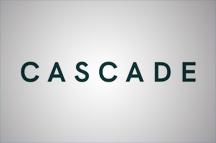As May approaches, the pertinent topic in the Royal Borough of Kensington and Chelsea is perhaps not the outcome of the election, but rather the changing face of the long-time Conservative Council and it’s enduring relationship with development. In contrast to neighbouring Westminster and Wandsworth across the river, Kensington and Chelsea is not the focus of electoral musings and Cllr Elizabeth Campbell is almost certain to return as Leader, barring a unforeseen shock result. The Conservatives have led the Council since 1964 and there are few signs pointing to any meaningful political change in the Royal Borough.
A look at the last four years
In the wake of the Grenfell disaster and Labour’s Emma Dent Coad snatching the Kensington seat at the 2017 General Election – overturning a 7,000 vote majority – many speculated that Labour would make further inroads at the local elections in 2018. This failed to materialise and Labour only claimed one more seat. Labour’s foothold in the borough was impacted further at the General Election in 2019 when relatively unknown local candidate, Felicity Buchan, reclaimed parliamentary control for the Conservatives. The borough remains politically split; the north, a more traditionally working class area, where Labour have always found support and further south, particularly towards the river, is dominated by the Conservatives. But local Conservatives will have been buoyed by the 2021 Mayoral election, where local boy Shaun Bailey found more support in the north of the borough than anticipated. Adding to this are apparent divisions within the Kensington Labour Group following the deselection of long-serving councillor Pat Healy and the more-recently elected Ian Henderson, meaning there will almost certainly be new faces in Dalgarno and Colville wards.
After 2018 Cllr Campbell pledged to “earn trust” and make the Council more accountable to residents. This pledge became evident when the Council began sharing live updates from meetings via social media and revisiting their own Statement of Community Involvement (adopted in 2020). To help with the trust agenda, Kensington and Chelsea became one of the first local authorities to embrace online committee meetings during COVID-19 and they continue via the Council’s YouTube channel.
Sounds quite progressive? This may be linked to the removal of the ‘old guard’ from the Council, with many of Cllr Campbell’s Leadership Team having been elected in 2018 and quickly brought into senior roles – including Councillors Anne Cyron (Communities, elected in 2016) Cem Kemahli (Adult Social Care and Public Health), Josh Rendall (Family and Children’s Services) and Johnny Thalassites (Planning, Place and Environment). More changes of personnel are expected in 2022, with long-time Conservative councillors such as Robert Freeman (1998) and Matthew Palmer (2006) standing down, along with more recently elected members such as Ian Wason.
Finding balance post-election
So lets assume, barring the potential exchange of a few seats, the political composition of the Council does not alter wildly in May – currently 36 Conservatives, 13 Labour and 1 Liberal Democrat. A bigger point of interest following the election will be how the Council balances the interests of residents against the need to secure investment in the borough and deliver the ‘good growth’ agenda their 2019 Local Plan outlined.
The Council created a task force to lead it’s response to COVID-19 and focus on re-activating key areas, such as the King’s Road, Kensington High Street and South Kensington which keenly felt the impact of the lockdowns, and sought the views of local businesses to guide it. Similarly, the voice of residents’ and amenity groups in the borough has arguably never been stronger, with representatives of the Kensington and Chelsea societies now sitting on the Council’s Quality Review Panel – which provides independent and impartial advice on development proposals – as local resident experts alongside a selection of planning and development professionals.
Cases such as the recently refused South Kensington Station application (not a Cascade project I would add) shine an interesting light on this balance. With 926 letters of support and 2,193 objections to plans, which to the layperson, would deliver investment and many public benefits – not least step-free access to the tube, which would be a boon for the nearby museums – you might ask what else do residents or politicians want from developers? But, in a borough that is both Conservative and conservative, constrained by a lack of development sites and tightly packed residential areas, details can tip the balance.
With election campaigning due to hit stride imminently, we expect to hear more from Cllr Campbell and colleagues about how they plan to navigate this challenging landscape.














